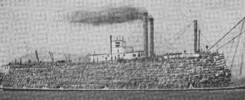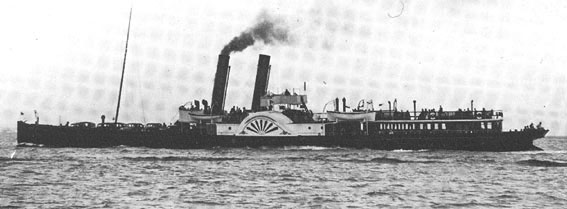
The immediate post Second World War period was quite a buoyant time for UK paddle steamer operations with services being re-introduced around the country and passengers teeming up the gangways in droves. Despite this, 1948 saw two paddle steamer withdrawals, the Solent Queen (pictured above) and the Pride of Devon.
The Solent Queen was a paddle steamer which should never have been built. In 1888 the Southampton, Isle of Wight and South of England Royal Mail Steam Packet Company (which later became known as Red Funnel Steamers) were expecting delivery from Barclay, Curle of Glasgow of the brand new paddle steamer Princess of Wales for their Southampton to Cowes ferry service, tendering and excursion work. However, on builders trials on the Clyde the Princess of Wales was run down by the larger steamer Balmoral Castle thereby passing into history as one of that tiny club of ships which sank before delivery to their first owners or their maiden voyage.
It was good news for the shipyard though which received a repeat order, Solent Queen being the result. She had a very long career, initially as the company’s crack excursion steamer but as other, larger vessels appeared she became progressively downgraded. She often appeared on the summer Bournemouth station running the Swanage service until the early 1930s after which she spent the final years of her career flapping backwards and forwards between Southampton and Cowes for which she could carry cars on her foredeck as can be seen in the picture above.
Withdrawn in 1948 the Solent Queen was towed to the Thames where she was scrapped, her ornate binnacle passing to the National Maritime Museum where it was on display in the once magnificent Neptune Hall. For 1949 Red Funnel received delivery of a brand new replacement vessel, our own Balmoral.
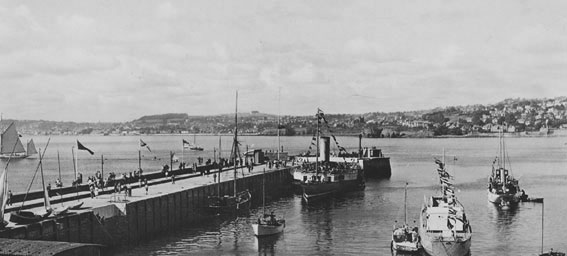
The Pride of Devon, pictured above alongside Haldon Pier Torquay, was built in 1897 as the Walton Belle, one of the famous Thames “Belle” steamers designed for the services from London to Ramsgate in the south and Great Yarmouth in the north. After that business failed, she passed to the New Medway Steam Packet Company in 1926 and was renamed Essex Queen.
After the Second World War she was snapped up by the South Western Steam Navigation Company and plonked down in Torquay, from which she was advertised to run local cruises along the coast. Torquay was ever a bit of a graveyard for excursion paddle steamers. With the exception of the small Duke and Duchess of Devonshire which ran from the mid 1890s until the mid 1930s no other paddle steamers enjoyed any real success from the resort even when provided by an experienced operator with expert technical backup like P & A Campbell.
At two hundred and thirty feet in length, the Pride of Devon was a big steamer with similarly big maintenance and operating costs. She was old and old ships are more expensive and troublesome to keep going as things wear out. Also, as with all attempts to run paddle steamers from Torquay, she was in direct competition with an armada of small passenger launches each manned by a skipper and a boy which could provide similar, and in many cases the same, trips for a fraction of the operating costs.
In 1949 there was insufficient cash for the annual refit to meet the requirements of the then Board of Trade so 1948 was her last season of operation. She languished at Southampton for another couple of years before being scrapped.
From 1947 to 1969 paddle steamers were withdrawn from service and scrapped almost every single year in the UK with some really bad years like 1949 and 1963 losing as many as six. The only exceptions were 1958 and 1959 when not a single UK paddle steamer was withdrawn. So hurrah for that. 1958 was a year to celebrate and pop the champagne corks.
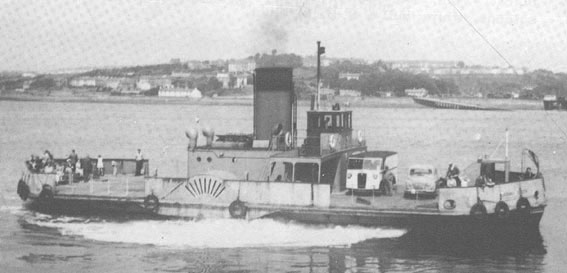
A decade on, the champagne had gone almost entirely flat with most of the British paddle steamer fleets decimated. 1968 saw another withdrawal, the Cleddau Queen, pictured above. She had been built as recently as 1956 to replace the little Alumchine on the ferry service between Pembroke Dock and Neyland. With her two compound reciprocating steam engines which could be operated independently she was a bit of an anachronism from the word go. In 1962 she was joined by a new consort with modern Voith Schneider propellers and this method of propulsion found great favour with her owners, Pembrokeshire County Council. As a result, in 1968, the Cleddau Queen had her steam engines and paddle wheels removed and was converted to Diesel screw propulsion. Arghhhhhhhhhh!
After the bridge was built over the estuary in 1975, the ferry service was withdrawn and the Cleddau Queen was converted into a sort of inshore survey craft. She was sighted in this guise in Portland Harbour at one stage in the 1980s. Does anybody out there know what finally became of her?
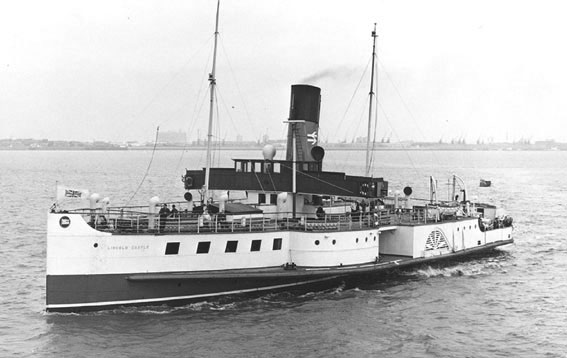
A further ten years on, 1978 saw the withdrawal of the last of the Humber paddle steamer ferries, the Lincoln Castle. Built in 1940 by A & J Inglis on the Clyde, she spent her entire career paddling backwards and forwards between Hull and New Holland with occasional diversions for excursions on the river.
Prior to the 1978 season a problem was found with her boiler and Sealink decided that a repair was uneconomic particularly with the prospect of a bridge across the river in sight. So that was that and she was withdrawn.
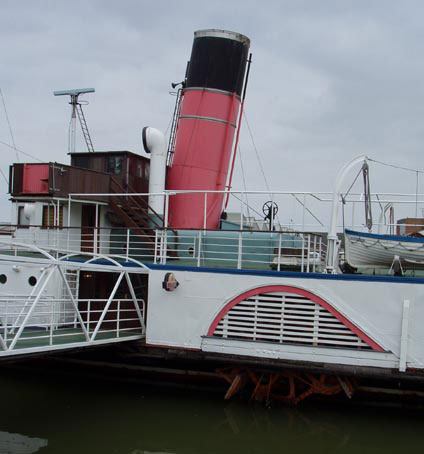
Lincoln Castle found another career as a restaurant and bar, initially under the new Humber Bridge and more recently at Grimsby. However, as almost always happens when ships become restaurants and bars, money is not available to be spent on their proper maintenance and, inevitably, their basic structure declines. After starting to make water, the Lincoln Castle is now berthed on a specially created gravel bank in the dock at Grimsby to prevent her sinking.
Kingswear Castle returned to service in 2023 after the first part of a major rebuild which is designed to set her up for the next 25 years running on the River Dart. The Paddle Steamer Kingswear Castle Trust is now fund raising for the second phase of the rebuild. You can read more about the rebuilds and how you can help if you can here.
John Megoran

